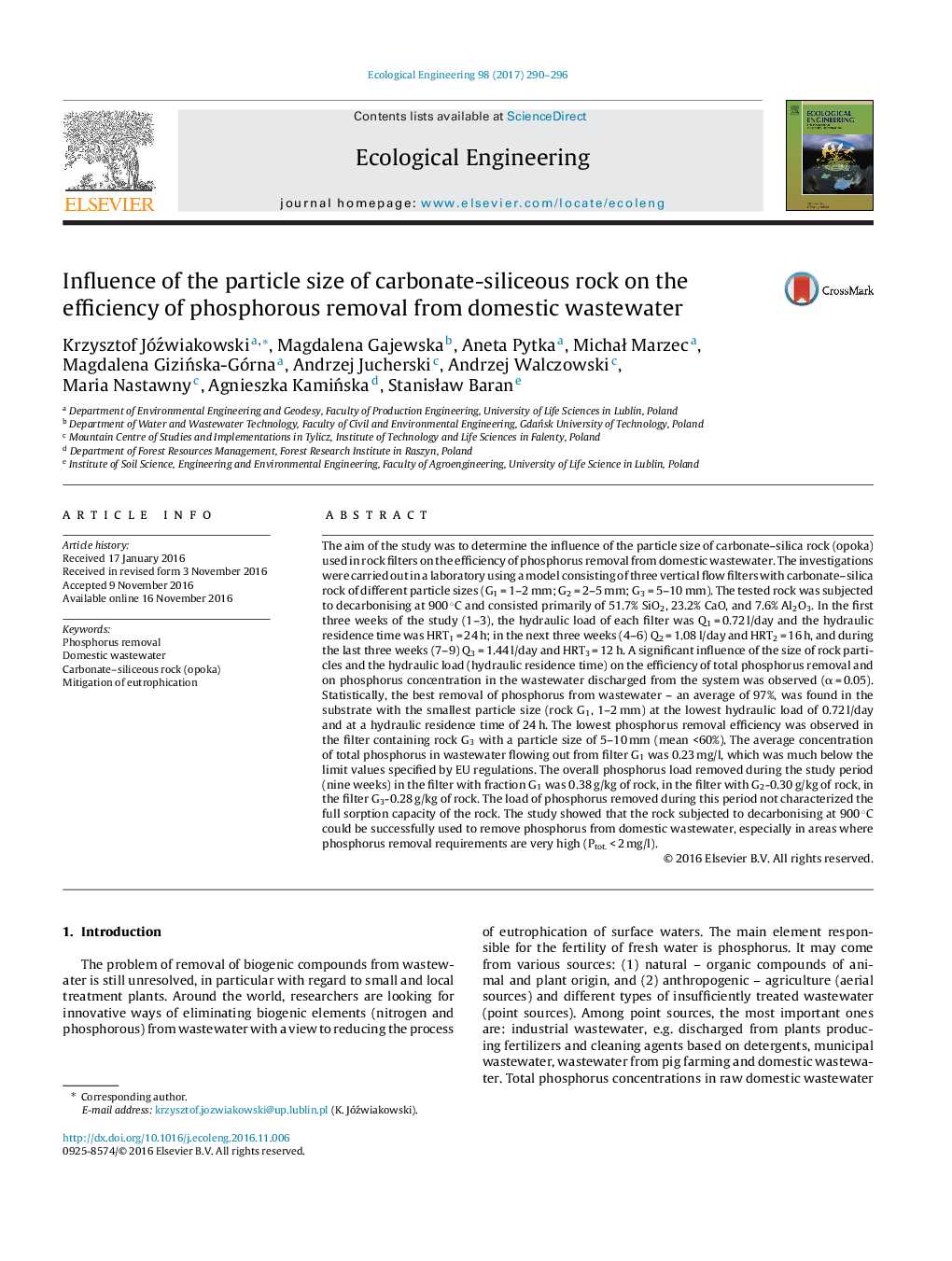| کد مقاله | کد نشریه | سال انتشار | مقاله انگلیسی | نسخه تمام متن |
|---|---|---|---|---|
| 5744030 | 1618001 | 2017 | 7 صفحه PDF | دانلود رایگان |
- Confirmed application of carbonate-silica rock to remove phosphorus from wastewater.
- Efficiency of phosphorus removal from wastewater depends on the grain size of the rock.
- Hydraulic residence time and load of phosphorous influent of final P concentration.
- pH of the treated wastewater decreased linearly with an increase of hydraulic load.
The aim of the study was to determine the influence of the particle size of carbonate-silica rock (opoka) used in rock filters on the efficiency of phosphorus removal from domestic wastewater. The investigations were carried out in a laboratory using a model consisting of three vertical flow filters with carbonate-silica rock of different particle sizes (G1 = 1-2 mm; G2 = 2-5 mm; G3 = 5-10 mm). The tested rock was subjected to decarbonising at 900 °C and consisted primarily of 51.7% SiO2, 23.2% CaO, and 7.6% Al2O3. In the first three weeks of the study (1-3), the hydraulic load of each filter was Q1 = 0.72 l/day and the hydraulic residence time was HRT1 = 24 h; in the next three weeks (4-6) Q2 = 1.08 l/day and HRT2 = 16 h, and during the last three weeks (7-9) Q3 = 1.44 l/day and HRT3 = 12 h. A significant influence of the size of rock particles and the hydraulic load (hydraulic residence time) on the efficiency of total phosphorus removal and on phosphorus concentration in the wastewater discharged from the system was observed (α = 0.05). Statistically, the best removal of phosphorus from wastewater - an average of 97%, was found in the substrate with the smallest particle size (rock G1, 1-2 mm) at the lowest hydraulic load of 0.72 l/day and at a hydraulic residence time of 24 h. The lowest phosphorus removal efficiency was observed in the filter containing rock G3 with a particle size of 5-10 mm (mean <60%). The average concentration of total phosphorus in wastewater flowing out from filter G1 was 0.23 mg/l, which was much below the limit values specified by EU regulations. The overall phosphorus load removed during the study period (nine weeks) in the filter with fraction G1 was 0.38 g/kg of rock, in the filter with G2-0.30 g/kg of rock, in the filter G3-0.28 g/kg of rock. The load of phosphorus removed during this period not characterized the full sorption capacity of the rock. The study showed that the rock subjected to decarbonising at 900 °C could be successfully used to remove phosphorus from domestic wastewater, especially in areas where phosphorus removal requirements are very high (Ptot. < 2 mg/l).
148
Journal: Ecological Engineering - Volume 98, January 2017, Pages 290-296
